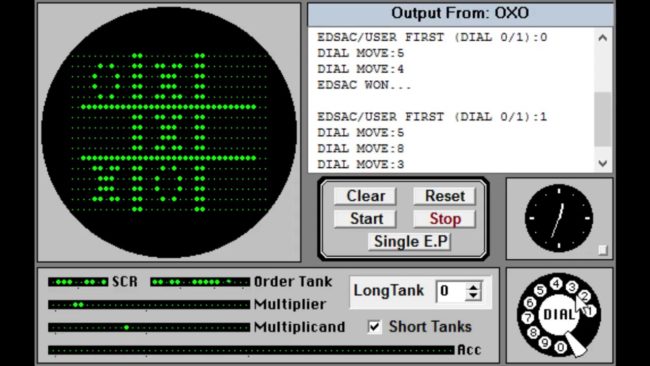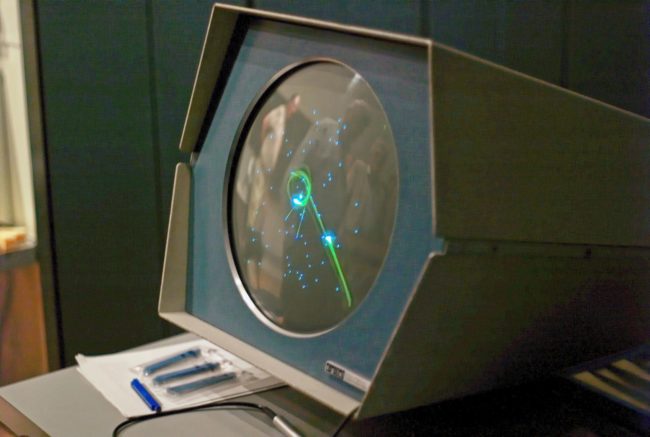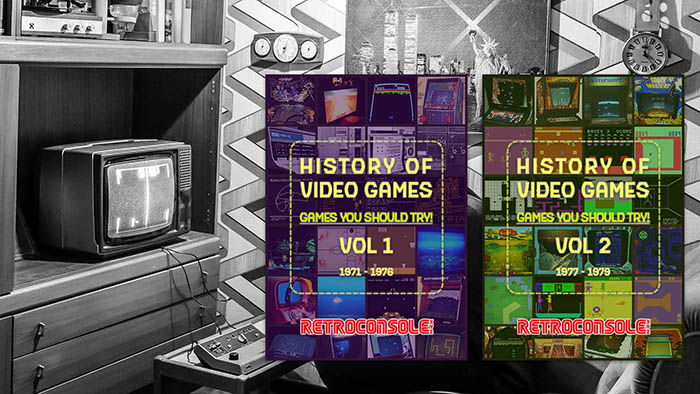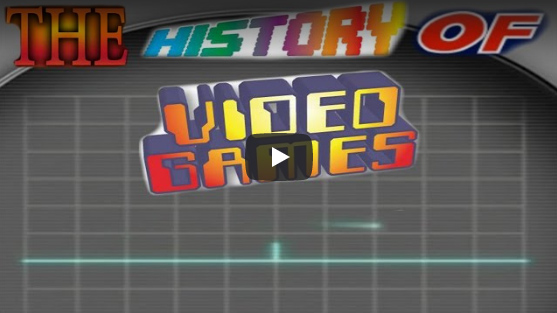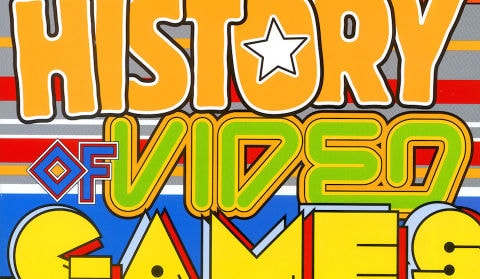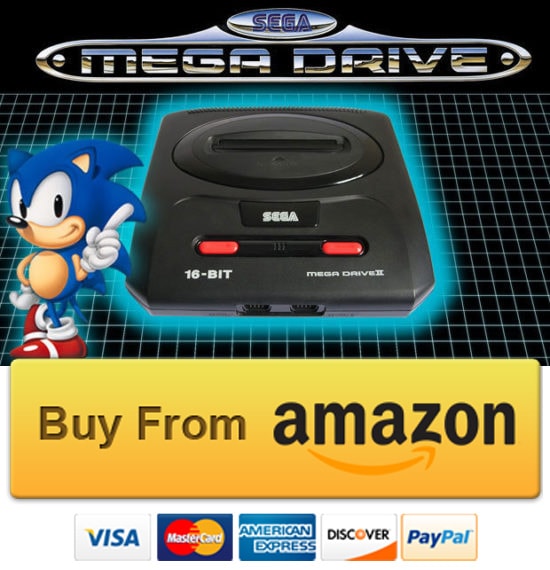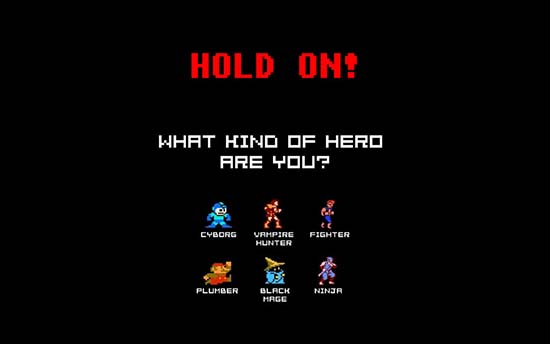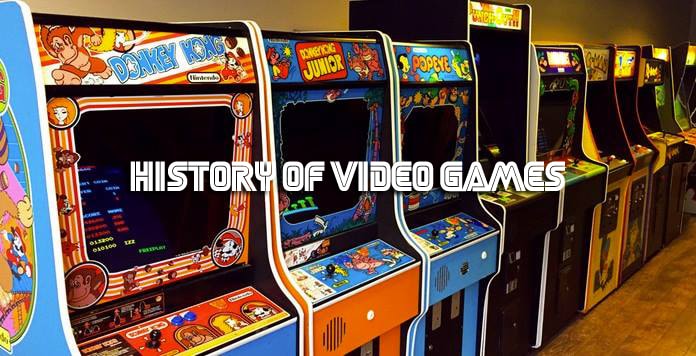
History of Video Games: Video games have been available to a wider audience since the early 1970s. Before that, video games existed almost entirely as novelties passed around by programmers and technicians with access to computers.
History of Video Games: The beginning
1950s: To start from the beginning, you need to take a look back as far as the early 1950s, when academic computer scientists began designing simulations and simple games as part of their research or just for recreation.
For example, in 1952, British professor A.S. Douglas created Noughts and Crosses, also known as OXO or a tic-tac-toe, as part of his doctoral dissertation at the University of Cambridge.
Another notable early video game, Tennis for Two, was created by William Higinbotham in 1958. For the annual visitor’s day at the Brookhaven National Laboratory in Upton, New York – Large analog computer was connected with oscilloscope screen. VIDEO
1960s: In the 1960s, professors and students played games such as 3D tic-tac-toe and Moon Landing, at M.I.T. (Massachusetts Institute of Technology).
In 1962, Steve Russell at the Massachusetts Institute of Technology invented Spacewar!, a computer-based space combat video game for the PDP-1 (Programmed Data Processor-1), then a cutting-edge computer mostly found at universities. It was the first video game that could be played on multiple computer installations.
These games were played on computers such as the IBM 1560, and moves were made by means of punch cards. Video gaming did not reach mainstream popularity until the 1970s and 1980s, when video arcade games and gaming consoles using joysticks, buttons, and other controllers, along with graphics on computer screens and home computer games were introduced to the general public.
1970s: The first commercial arcade video game, Computer Space by Nutting Associates, was introduced in 1971. However, it was 1972, when the first commercially successful video arcade game, Pong was released.
Another notable milestone in the video gaming history was the launch of Activision, the first third-party game developer (which develops software without making consoles or arcade cabinets), in 1979.
Scroll down to vote for your favorite video game consoles before 2000s. Thanks!
The History of Video Games: Documentary
What could be better than getting to know the history of video games with Tony Hawk? You can’t really beat that!
The video is from 2004, so it’s outdated – But it’s still fun to watch!
If you are more interested in the history of home consoles, starting with Magnavox Odyssey (1971), take a look here: Video Game Consoles
Timeline of Video Games
History of video games goes back to the early 1950s. Academic computer scientists began designing simple games and simulations as part of their research. However, video games existed almost entirely as novelties passed around by programmers and technicians with access to computers.
Commercially available video games have existed since 1971. Bill Pitts and Hugh Tuck developed a coin-operated computer game, Galaxy Game, at Stanford University using a DEC PDP-11 computer with vector displays.
History of Video Games by Decades
On the following images you will see the history of video gaming consoles.
Home consoles before 1970s
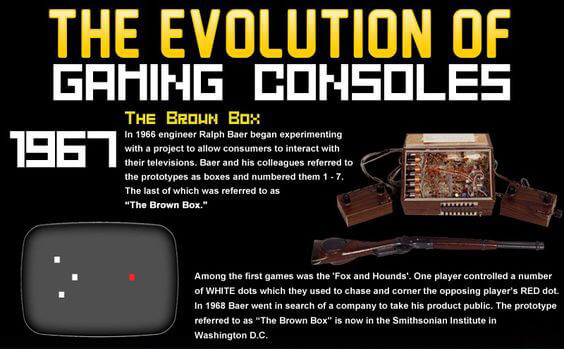
THE EVOLUTION OF GAMING CONSOLES
THE BROWN BOX
In 1966 engineer Ralph Baer began experiment with a project to allow consumers to interact with their televisions. Baer and his colleagues referred to the prototypes as boxes and numbered them 1 – 7. The last of which was referred to as “The Brown Box”.
Among the first games was the “Fox and Hounds”. One player controlled a number of WHITE dots which they used to chase and corner the opposing players RED dot. In 1968 Baer went in search of a company to take his product public. The prototype referred to as “The Brown Box” is now in the Smithsonian Institute In Washington D.C.
Home consoles 1971-1975
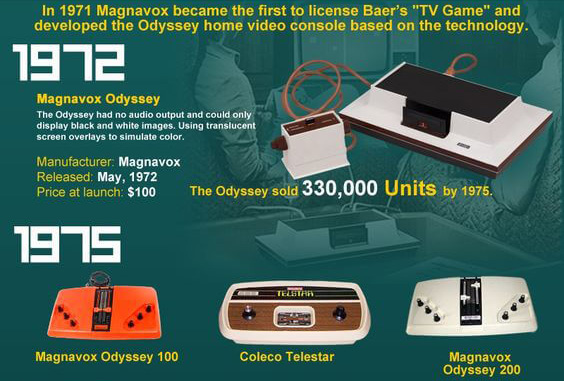
In 1971, Minnesota college students Don Rawitsch, Bill Heinemann, and Paul Dillenberger create Oregon Trail, a simulation of pioneers’ westward trek. Originally played on a single teletype machine, Rawitsch later brought the game to the Minnesota Educational Computer Consortium (MECC) which distributed it nationally. Source: Museumofplay
Besides that, in 1971 Magnavox became the first to license Baer’s “TV Game” and developed the Odyssey home video console based on the technology.
Magnavox Odyssey (Released: May, 1972 – Price at launch: $100 ) had no audio output and could only display black and white images. Using translucent screen overlays to simulate color. The Odyssey sold 330,000 Units by 1975.
In 1975, Magnavox Odyssey 100, Magnavox Odyssey 200 and Coleco Telestar consoles were released.
Home consoles 1976-1979
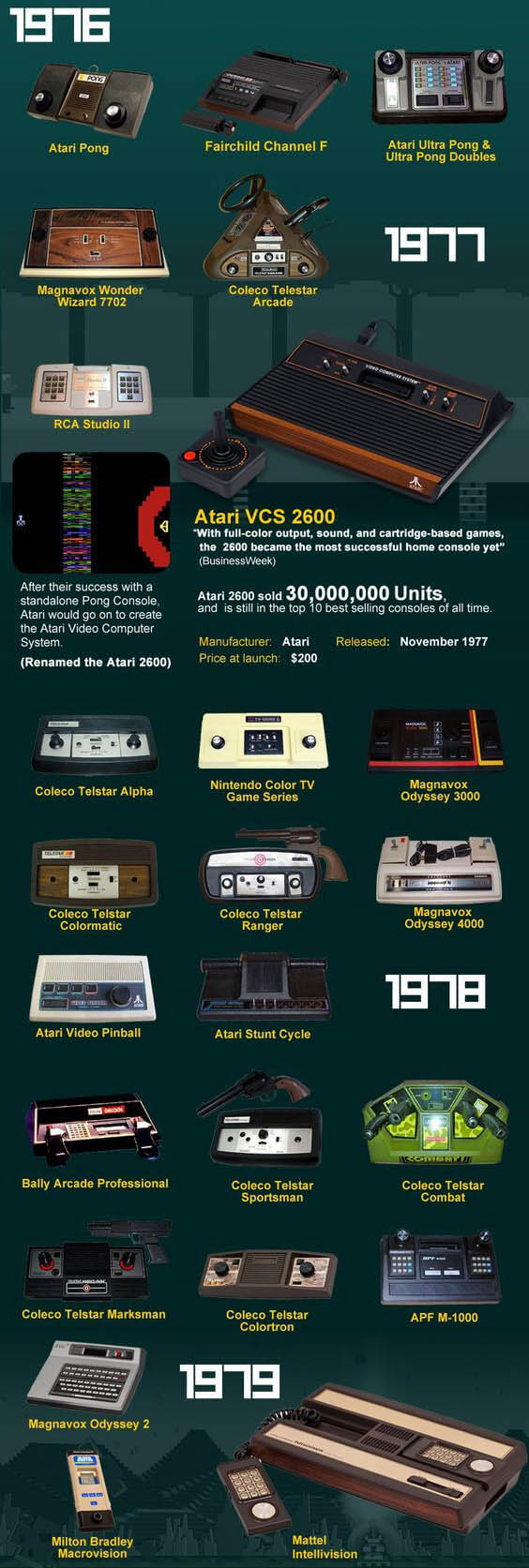
In 1977, Atari releases the Atari Video Computer System, more commonly known as Atari 2600. Featuring a joystick, interchangeable cartridges, games in color, and switches for selecting games and setting difficulty levels. It makes millions of Americans home video game players.
In 1978, Taito’s Space Invaders descends on Japan, causing a shortage of 100-yen coins. Within a year, 60000 Space Invaders machines in the United States tempt Americans to spend millions of quarters driving back the seemingly unstoppable ranks of attacking aliens.
In 1979, Toy-maker Mattel supplements its handheld electronic games with a new console, the Intellivision. Intellivision has better graphics and more sophisticated controls than Atari 2600, and players love its sports games. Mattel sells three million Intellivision units.
Video Game Crash of 1977
The Video Game Crash of 1977 is both misunderstood and very rarely discussed.
The crash was largely caused by the significant number of Pong clones that flooded both the arcade and home markets. No one wanted to play or buy pong consoles. The crash eventually came to an end with new re-programmable console called Atari 2600. It was not the first Second generation console, however the most successful (sold more than 30 million units).
Home consoles since the 1980s
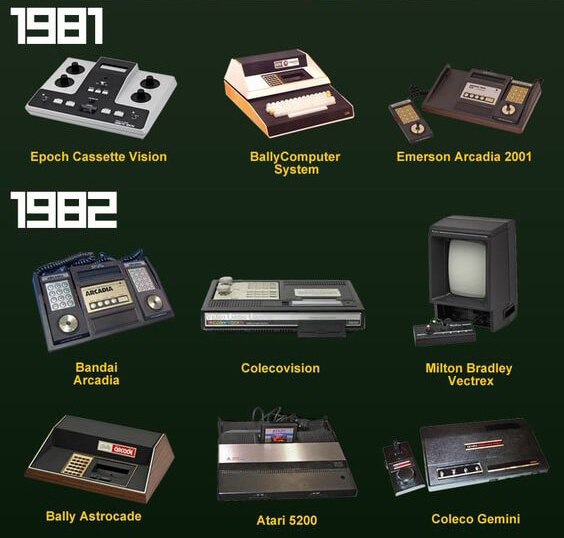
Video Game Crash of 1983
What caused the Crash of 1983? Over abundance of crappy games?
That’s the worst myth in gaming history. There is no more of an over abundance of bad games then than there is now and in ever generation in between. The crash was caused by a lot of reasons, but none of them were because a few bad games were made that never got shelf space and no one ever played until the 90s when the ROM got dumped.
The crash got kicked off because of a Wall Street Panic on December 7th 1982 where Warner announced that Atari’s profits would see a 10 to 15 percent increase and not the projected 50 percent.
This caused a chain reaction where video game stock soured.

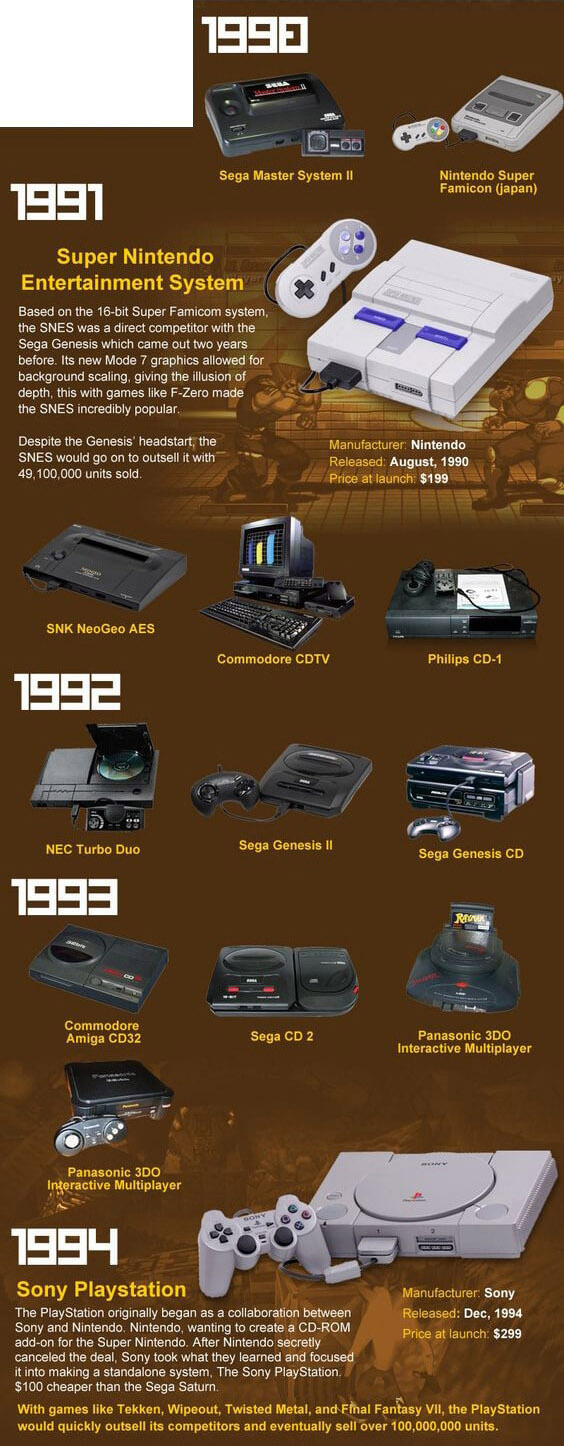

Which video game consoles before 2000s are your favorite?
CLICK HERE TO VOTE
Composed by: Retroconsole xyz

